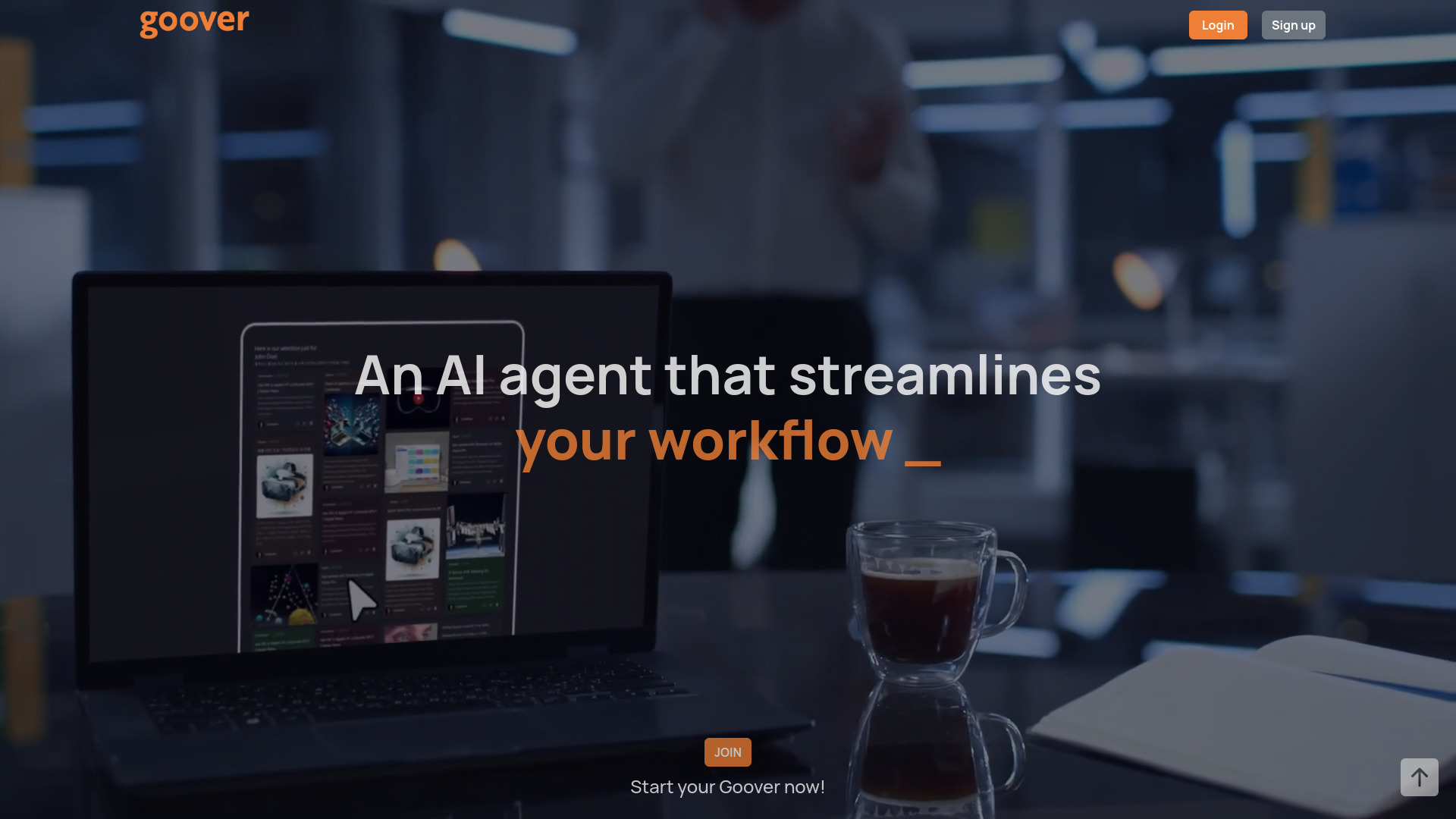
Goover
Open Website-
Tool Introduction:Domain-specific AI research agent with Graph RAG and smart reports
-
Inclusion Date:Oct 28, 2025
-
Social Media & Email:
Tool Information
What is Goover AI
Goover AI is a personalized re:search agent built for domain-specific knowledge work. It combines AI-powered search, cognitive search, and autonomous agent capabilities to surface precise answers from your private sources and the web. Powered by Graph RAG (Retrieval-Augmented Generation), it maps relationships across documents to improve relevance, reduce hallucinations, and preserve context. Users can generate AI reports, curate collections, and automate recurring inquiries, turning fragmented information into accurate, decision-ready briefs.
Goover AI Main Features
- Graph RAG retrieval: Builds a relationship graph across entities, concepts, and citations to deliver context-aware results and grounded answers.
- Cognitive search: Semantic search that understands intent, synonyms, and domain terminology across PDFs, webpages, and notes.
- AI agents for research: Configure step-by-step agents to collect sources, compare evidence, synthesize findings, and draft reports.
- AI reports: Generate structured summaries with key insights, citations, and highlights suitable for briefings or literature reviews.
- Collections: Organize sources and results into reusable AI collections with tags and notes for ongoing projects.
- Source grounding: Inline citations and traceable passages help validate outputs and support auditability.
- Query routing: Blend your private corpus with targeted web search to fill gaps and broaden coverage when needed.
- Prompt templates: Reuse tailored prompts for consistent analysis across topics, teams, or clients.
Who Should Use Goover AI
Goover AI suits researchers, analysts, consultants, product managers, competitive intelligence teams, legal and policy professionals, knowledge managers, and students who need accurate, explainable answers from domain-specific content. It is ideal when precision, citations, and repeatable research workflows matter more than generic chatbot responses.
How to Use Goover AI
- Create an account and set your workspace preferences.
- Ingest data by uploading documents or adding URLs; group them into collections.
- Optionally enable web search to complement your private corpus.
- Trigger indexing so Graph RAG can build relationships across entities and topics.
- Ask a research question; review retrieved passages, entities, and suggested angles.
- Refine with filters, constraints, or prompt templates to tighten scope and tone.
- Generate an AI report; inspect citations and linked evidence for verification.
- Save insights to a collection and set up an agent to monitor updates or run periodic checks.
- Export or share summaries and references for stakeholders.
Goover AI Industry Use Cases
In financial analysis, Goover AI can scan filings and earnings transcripts to compare guidance, risks, and KPIs with source citations. In life sciences, it synthesizes literature across papers and trial registries to support evidence reviews. Legal and policy teams can analyze regulations and commentaries to produce grounded briefs. Product and competitive intelligence teams track feature changes, pricing shifts, and customer feedback with repeatable agent workflows.
Goover AI Pros and Cons
Pros:
- Graph RAG improves retrieval relevance and reduces hallucinations.
- Citations and grounded passages support verification and trust.
- Reusable agents and templates streamline recurring research tasks.
- Flexible blending of private corpora with targeted web search.
- Structured AI reports accelerate briefings and stakeholder updates.
Cons:
- Initial setup and indexing require time and high-quality source material.
- Results depend on corpus coverage; gaps may need additional ingestion.
- Complex topics still benefit from human review and domain expertise.
Goover AI FAQs
-
How does Graph RAG differ from standard RAG?
Graph RAG models relationships among entities, concepts, and sources, enabling multi-hop reasoning and context preservation beyond simple chunk-and-retrieve approaches.
-
Can I restrict answers to my own documents?
Yes. You can limit retrieval to your private collections, or opt to include web search when broader context is required.
-
What file types are supported?
Common research formats such as PDFs, webpages, and text notes are supported; exact coverage varies by ingestion method.
-
Does Goover AI replace a search engine?
No. It complements web search by grounding results in your domain-specific corpus and producing explainable, citable summaries.
-
How do AI agents operate?
Agents follow predefined steps—collect, retrieve, compare, synthesize, and report—using your collections and, optionally, web sources, with checkpoints for human review.

